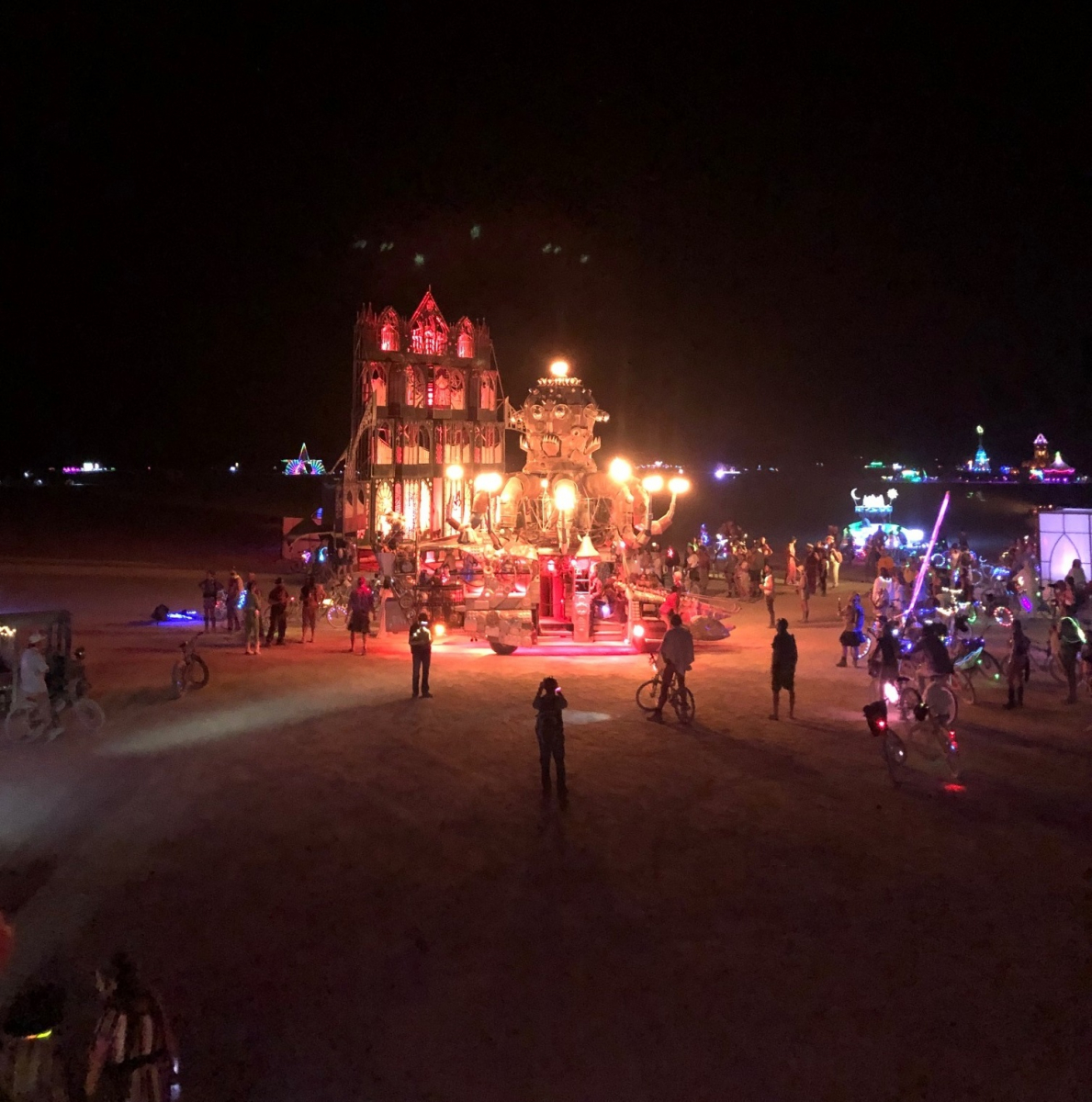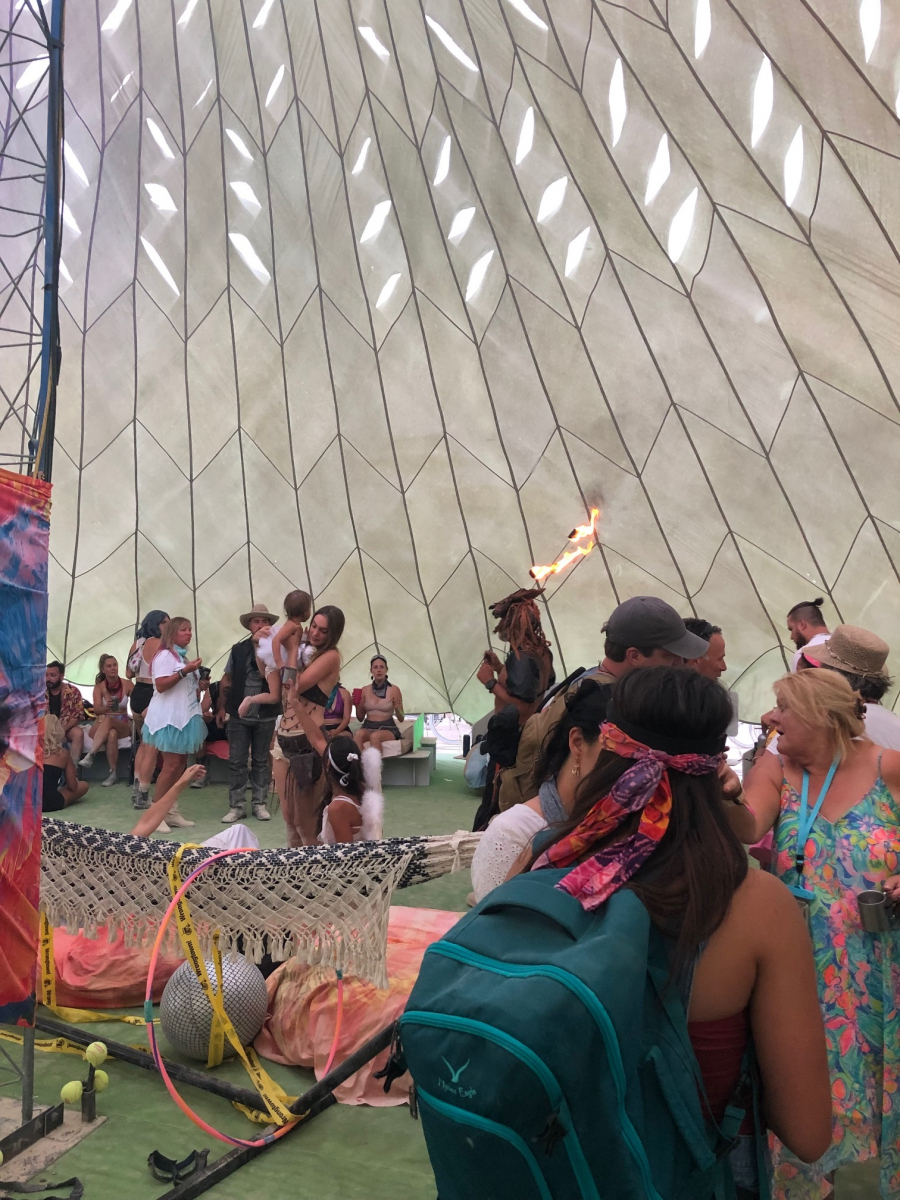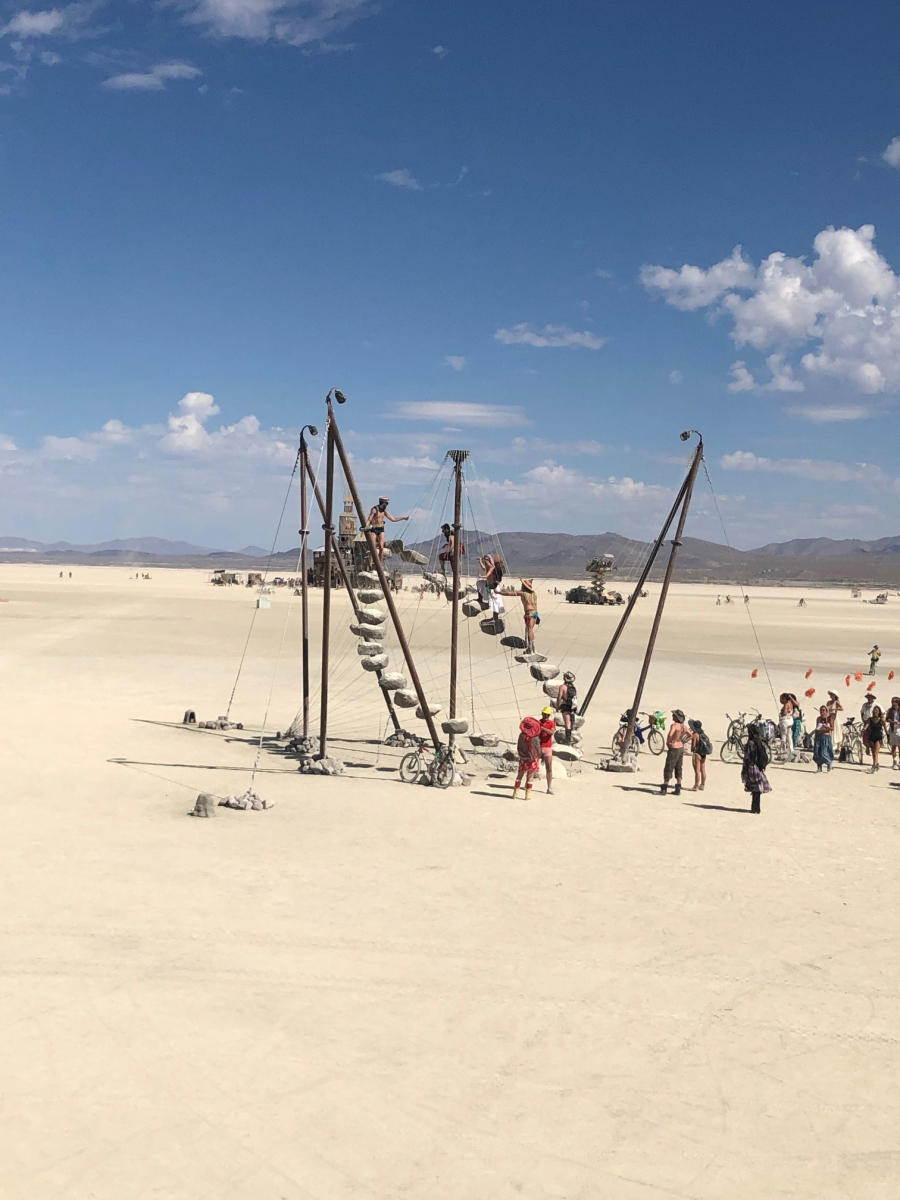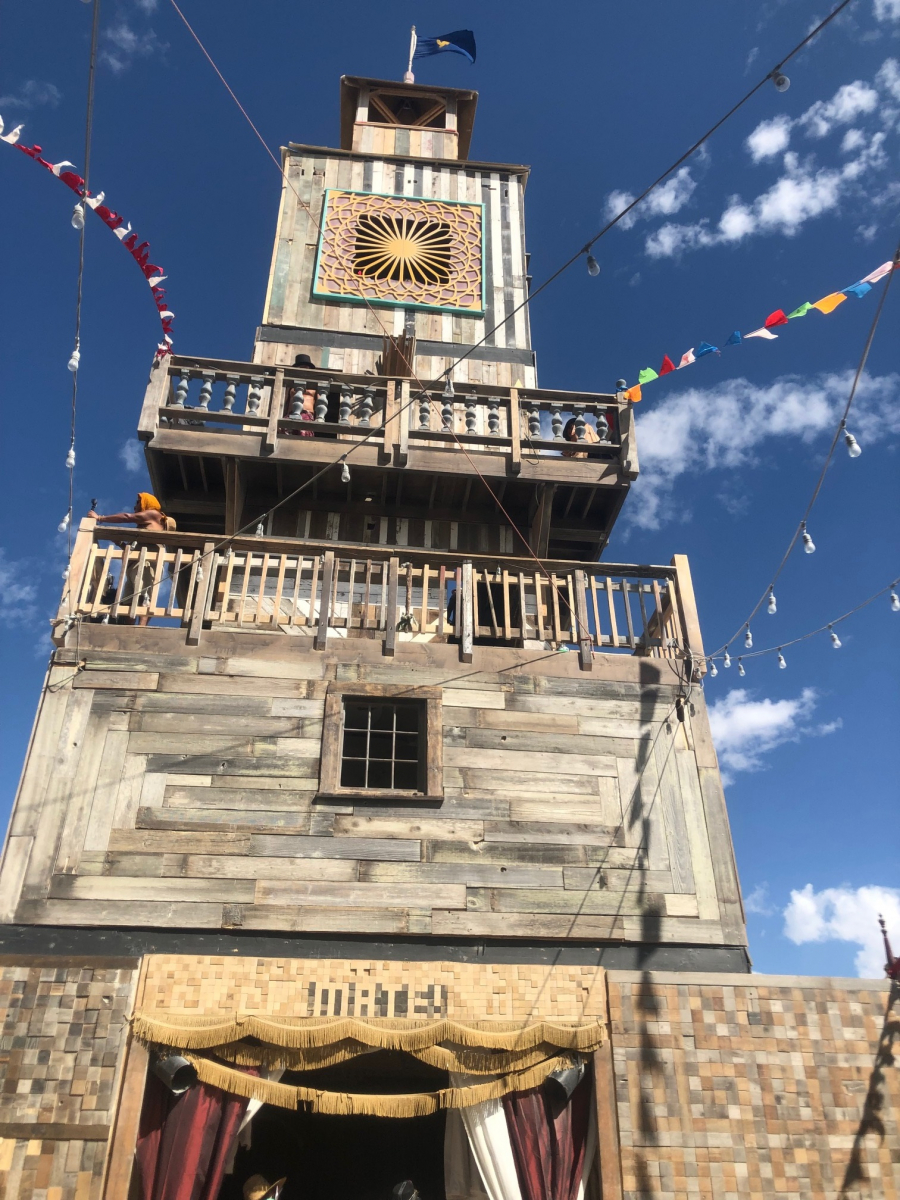Creativity Untethered at Burning Man
Posted by Sep 23, 2019

Mr. Clayton W. Lord
The thing you don’t experience in the photos of Burning Man is the heat. The heat and the constant, fine miasma of dust from the fine gypsum sand that covers the ground. The other thing it’s hard to understand from photos is the scale—the wideness of the expanse and the endless height to blue sky conspire to make even gigantic, house-sized sculptures look small on the large expanse known as the Playa.
I count myself incredibly lucky to have been able to tour to Burning Man thanks to the good graces and coordination of the Reno Arts Commission, the U.S. Conference of Mayors, and Burning Man itself. I was part of a group that primarily consisted of mayors and their staffs from across the country, as well as Nora Halpern, my colleague here at Americans for the Arts, and Mary Anne Carter and Tom Simplot from the National Endowment for the Arts. We were there to experience first-hand the deep community nature of Burning Man; the ways that art, creativity, expression, and culture are solidly integrated into every aspect of the event; and the complex undergirding that makes it all possible.

So, here’s the report: it’s incredibly complex—layers and layers of infrastructure all designed to provide the experience of a temporary city housing 70,000 or more people for a week in the middle of a very hot (did I mention that already?) and very dry desert. But it’s not just the physical infrastructure—the more fascinating component to me was the cultural and social infrastructure. Aided and abetted by the attendees themselves, many of whom come together in theme camps from the innocuous to the hardcore, the folks at Burning Man have managed a sort of insta-culture in this place, complete with a central coffee shop, a gayborhood, dance halls, massage parlors, education centers, and even a DMV. While not without its controversy—Favianna Rodriguez, an artist we’ve hosted at the Annual Convention before and well-known activist on immigration and women’s rights, spearheaded a petition this year to encourage more radical inclusion and an increase in attendees of color at what really is a very white event—the openness, freedom, zaniness … expansiveness seemed, in my brief time there, to create something pretty cool.


And the art—whoa, the art! Constructed around a nominal theme of “metamorphosis,” there was a giant, mechanical Pegasus whose wings were set aflame at night, a carefully constructed staircase of 27 stones seemingly hung in midair that people could actually climb on (what liability?), a multi-story chartreuse inflatable elephant that seemed inspired by the hallucinatory heffalumps and woozles scene from Dumbo, an oversized trophy with an empty top pedestal so that everyone could transform into a winner, and on and on. There are “sound camps” that transform into raves and dance parties at night. Mad Max fashion bumps up against folks dressed (perhaps appropriate) for a looming dust storm and folks dressed in nothing at all. Much of this art exports out into communities across the country after the festival itself is done, thanks to a set of interconnected partnerships nurtured by, among others, Kim Cook, the former head of the New Orleans Arts Commission and now Director of Art & Civic Engagement for Burning Man—including a recent major show at the Renwick Gallery in Washington, DC.


For the folks at the Reno Arts Commission, the goal is to create a deeper and more sustained symbiosis between the city that everyone comes through and the Playa where everyone is going. Certain of the works from Burning Man have found permanent homes in the public art collection of the city, and others have been put on temporary or permanent display by some of the major landholders in Reno, including on a set of lots downtown that are currently undergoing redevelopment. Burning Man has a standing office in Reno, and has been working the past few years to expand the presence and impact of the festival in various ways that go beyond the entry and exodus associated with the one-week event.

I met a tech guy from the Bay Area who, after talking with me, took off his shirt and donned a horned mask with flames shooting from the top and danced around while a friend trained a fire extinguisher on him. I stood inside a temple that was destined to burn to the ground as people filled it with commemorations to those who have been lost. I saw a naked man ride a precariously tall bike through the beginnings of a dust storm while singing full voice, and then donned goggles as the whole world disappeared around me into a gray, glowing swirl of sand. I walked through the desert to a swing made of clouds. I watched a winged horse in perpetual motion, spouting flame. There is freedom in coming to a temporary city to transform yourself into a different, freer version of you. That freedom exists in the way people dress, the way they act, the art they make. It is creativity untethered—70,000 people rolling back all of the strictures that keep us who we are in the day-to-day. Maybe it’s not a place to live, but I sure am glad I got to visit.






